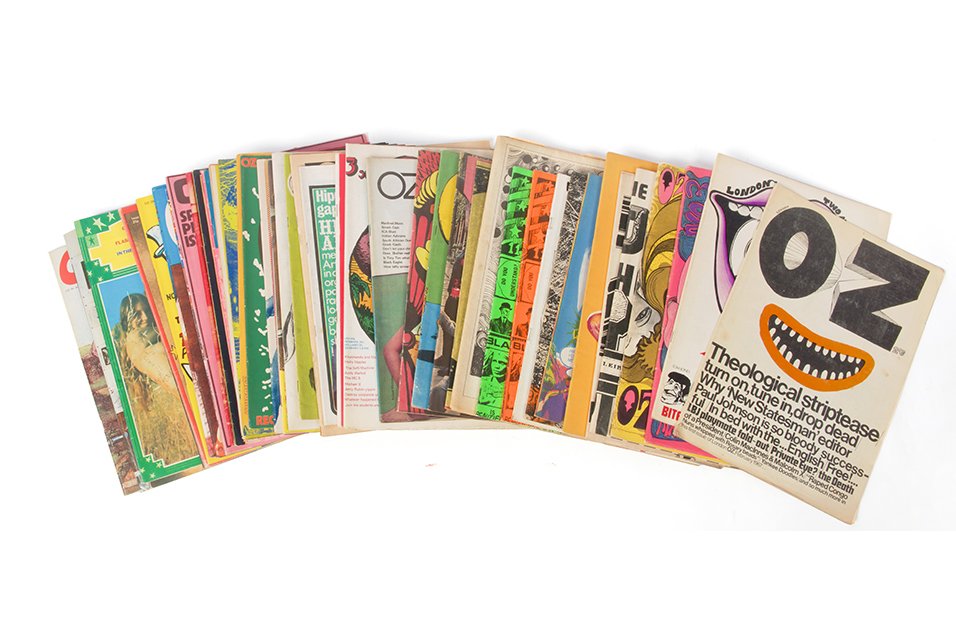London – The 1960s wasn’t just a run-of-the-mill decade. It was a seismic shift in thought, music, protest, and possibilities. From the late 1950s through the mid-1970s, art, politics, and rebellion collided, shaping a cultural identity that still shadows the present.
The Long Sixties (1955–1975), now on view at Shapero Rare Books in Bond Street from 10–21 November 2025, is a collection that doesn’t just catalogue that change; it relives it.
The collection, assembled by the late Hilary Gerrard — a financial adviser and longtime confidant of Ringo Starr — offers one of the most complete archives of the era ever to surface. Shapero is seeking a seven-figure sum for the whole, though a selection of highlights will go on public view for the first time. In scale and depth, it rivals institutional holdings, spanning thousands of rare items: posters, protest leaflets, underground magazines, festival tickets, and personal manuscripts that map the shifting language of liberation.
Gerrard, who died in 2023, was not the kind of collector who chased market trends. His passion was personal — an attempt, perhaps, to reclaim the youthful chaos he once lived through from behind the scenes of the Beatles’ empire. In doing so, he built something extraordinary: a portrait of postwar defiance told through the scraps of a generation that refused to conform.
The Long Sixties collection reads like a living archive of counterculture. There are early editions of William S. Burroughs, the outlaw writer whose hallucinatory cut-up novels detonated conventional narrative and paved the way for postmodernism. Two items are particularly significant: Time (1965), one of just ten copies published by “C” Press and signed by Burroughs and Brion Gysin, complete with a manuscript page; and Health Bulletin: APO-33, Ed Sanders’ 1965 publication for Fuck You Press — a work of typographic anarchy that bridged poetry, sound, and experiment.
The collection also includes Brion Gysin’s unpublished manuscript notebook from his Beat Hotel years — a raw record of his experiments with calligraphy, sound poetry, and the Dream Machine. Unseen until now, it’s a discovery that will likely rewrite elements of Beat history.
Equally potent are the materials tied to the American civil rights movement and the birth of Black identity politics. There are original documents from the early Black Panther Party, 302 issues of their Community News Service, and pamphlets from the Student Nonviolent Coordinating Committee and CORE — fragile, urgent paper witnesses to a revolution in real time.
The spirit of youth rebellion is threaded throughout: eyewitness accounts from the 1968 Chicago Democratic Convention, scrawled by Allen Ginsberg, Burroughs, Jean Genet, and Terry Southern as tear gas filled the park; manifestos from Students for a Democratic Society and the Yippies; and hand-printed flyers from London’s Antiuniversity, Berkeley’s Free Speech Movement, and the Diggers’ anarchic street theatre in San Francisco.
Europe is not left out. There’s a complete set of Semina, Wallace Berman’s hand-assembled journal that became the West Coast’s most influential underground art publication. There are 102 original posters from Paris May 1968 — bold, ink-smeared declarations of disobedience — and Dutch Provo material documenting Amsterdam’s playful resistance to authority.
One particularly rare relic is “Can You Pass the Acid Test?” Flyer from 1966, a memento from Ken Kesey’s LSD-fuelled happenings that fused rock, light, and mind expansion into proto-performance art.
Among the ephemera lies the unexpected: Cedric Price’s site plan for Phun City (1970), the UK’s first large-scale free festival. What began as a fundraiser for International Times became a cultural flashpoint when organisers tore down the fences, letting the music — and the crowd — run free.
Hilary Gerrard’s archive is not nostalgia; it’s a reminder of when paper, print, and protest mattered. In an age of digital ephemerality, these hand-stapled zines and ink-stained flyers stand as the physical DNA of the counterculture. For all its talk of peace and love, the Long Sixties were also about risk, confrontation, and invention. This collection captures that tension — not as a museum piece, but as a time capsule of ideas still unfinished.


